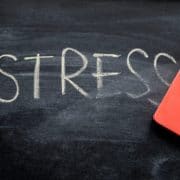Finding the Silver Lining
We all react to different problems in different ways. Ever noticed that some people can stay calm under adversity while others are obviously stressed out? One of the best ways to help change your emotional response to a bad situation is something called cognitive reappraisal.
Cognitive Reappraisal is:
1) attending to the emotional situation, which will elicit an automatic judgment of the situation,
2) a cognitive re-evaluation of the situation in a more neutral or positive direction.
What happens when you take a split second to cast a better light on an otherwise dark situation is that you can actually up-end your emotional experience entirely. What was once an idiotic, reckless driver, is now a guy just trying to get to work on time. What was once a bad interview, is now good experience and something to improve on next time. Studies have demonstrated that the use of cognitive reappraisal can change how you view the emotional experience very quickly and even decrease the physical effects of emotion on the body. For example, anger typically causes your heart rate, respiration, and skin conductance levels to elevate, but upon reappraisal, these responses don’t spike nearly as highly.
An effective way to do this is to create a Catastrophe Scale. Form your scale of how bad things are from 1 to 10 – 10 being the worst possible thing that could ever happen and 1 being something mediocre. Refer to this scale to get a bigger picture of how bad the situation currently is.

Here are some examples:
- Getting caught in a rainstorm while on your way to work
- Kid fails a test at school
- Work presentation doesn’t go as well as you hoped
- Car breaks down and you’re late for work
- Miss a very important business meeting or job interview
- The doctor says that you have high blood pressure
- Broken limb and it interferes with work
- Losing a close relationship/marriage/friendship
- Someone you love dies
- The whole family dies in front of you and having to witness it in a war-torn country
Obviously, the circumstances surrounding all of these can be personal to you. But the point of a catastrophe scale is to step back and see the bigger picture and use it as a reference point whenever times call for it.




 WHY DOES IT WORK?
WHY DOES IT WORK?


